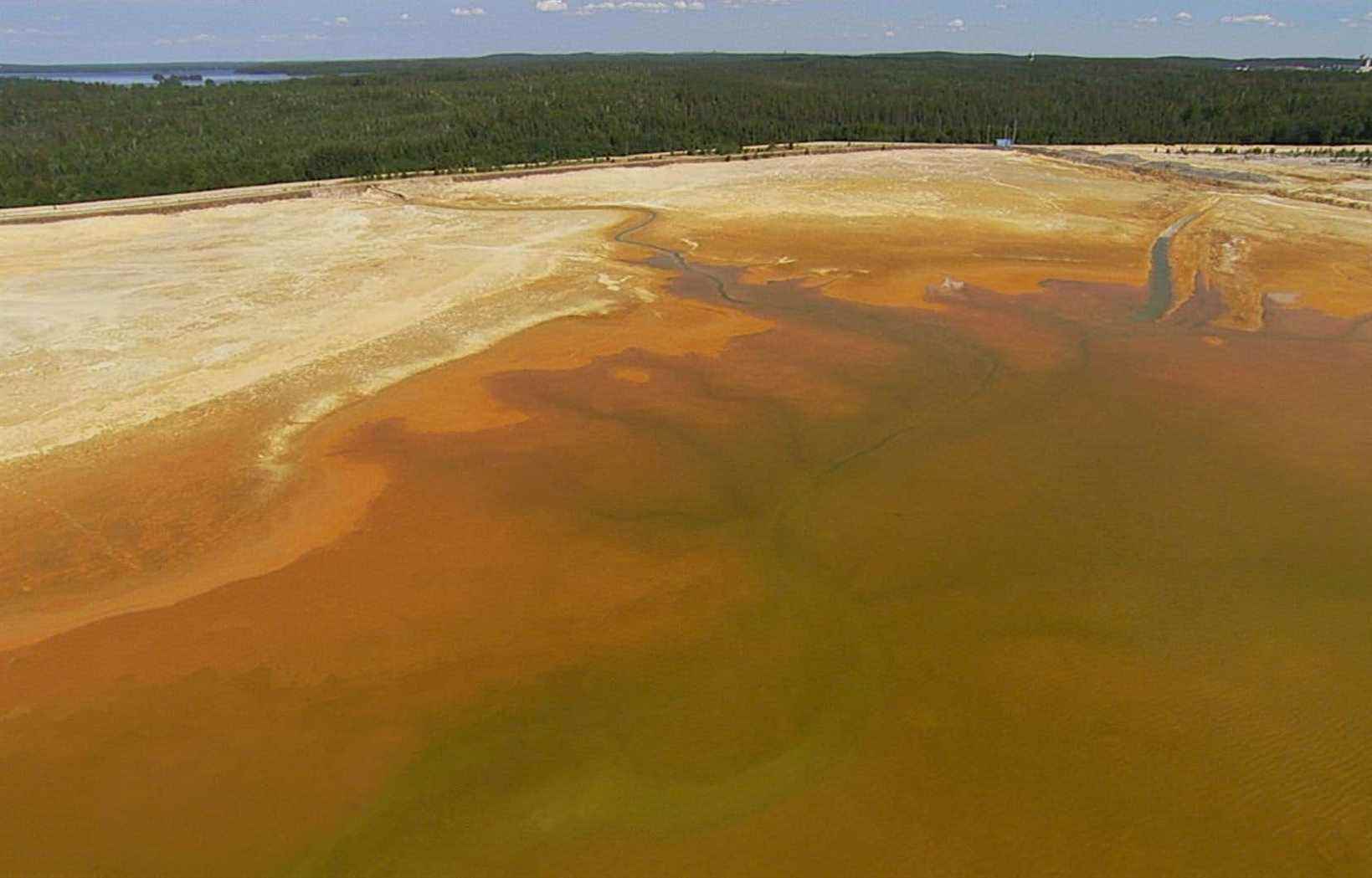The greater than expected contamination of certain abandoned mining sites leads to increased costs for the Quebec State, which is entirely responsible for them. The Legault government assures that the bill should not exceed the assessment of $ 1.2 billion, but the Coalition Quebec better mine says that the total costs are likely to be much higher than expected.
While the “characterization” of the contamination of several dozen abandoned exploration and mining sites remains to be done, the results of the work carried out in 2020-2021 on former mining sites which are today the state charge demonstrates that the costs were higher than expected.
According to what emerges from this “Review of the work plan” of the Ministry of Energy and Natural Resources (MERN), the Government of Quebec thus spent $28.2 million last year to continue the work planned to overcome the environmental liability of former mining sites in the province. The “expected” amount was $22.5 million.
The difference between the forecast and the amounts actually spent is explained by the need to treat more contamination than expected on sites that have been the subject of “remediation”, according to what can be read in the report of the ministry. . “Actual expenditures greatly exceed planned costs, mainly due to additional work required at two mine sites. »
contaminants
The “Lac Renzy” site thus cost $9.3 million, instead of the $4.3 million initially planned for 2020-2021. This 215% jump in the bill is explained by “the management of materials contaminated with petroleum hydrocarbons and the presence of xanthate [un composé toxique], as well as a hazardous waste to be managed according to environmental regulations, whose transportation and disposal costs are substantial”. What’s more, this former Outaouais nickel mine, operated only from 1969 to 1972, has already cost taxpayers more than $18 million since 2007.
Another former mining site, named “Preissac Molybdenite”, required last year “additional work caused by the presence of specific contaminants (dioxins and furans), specifies the MERN. This “unscheduled treatment” increased the bill from $8 million to $12.2 million. This former mine in Abitibi-Témiscamingue, which notably contaminated groundwater, has cost $15 million since 2007, the ministry’s reference year for the start of cleanup work on abandoned mine sites.
With regard to the worst site under the responsibility of the State, that of “Manitou”, in Abitibi, the work of “rehabilitation of soils and contaminated mine waste rock” and the “unplanned treatment of specific contaminants (dioxin and furan)” cost $3.7 million in 2020-21. This site has already cost the government more than $25 million.
In addition to the restoration of the sites, the government must subsequently ensure their monitoring and maintenance. In this case, “actual expenditures for 2020-2021 greatly exceed the planned costs, as additional work was required on various mining sites”, specifies the report. This “post-restoration monitoring and maintenance” cost $322,000 last year, but more than $74 million since 2007, including $35 million just for the old zinc and silver mine “Barvue”. This was operated from 1952 to 1957.
Rising costs
For the Coalition Québec mieux mine and Mining Watch Canada, these examples are revealing of what awaits Québec, namely a bill that should increase significantly over the next few years. “Once we start the fieldwork, there are surprises that had not been identified. The last official assessment available on the MERN website dates from March 2019, but in reality, this figure is only an estimate, or rather a gross underestimate,” says the spokesperson for the Coalition Québec mieux mine, Ugo Lapointe.
According to this estimate, the “mining environmental liability” of the sites at the expense of the State amounts to 1.2 billion dollars, i.e. 732.1 million for abandoned sites and 469.9 million “for mining sites where the MERN may have to act given the precarious financial status of those responsible”. Since 2006, the government has spent at least $208 million, but the assessment listed on the department’s website has remained the same.
In total, the Department lists 223 abandoned exploration sites, including 213 for which the inventory “still to be established” on the Eeyou Istchee — Baie-James territory. Of the 177 abandoned mining sites, the MERN classifies 110 as “restored”. However, he must “monitor and maintain” them. Restoration work is in progress or to come on 27 others, while 36 are in “characterization” and four “to be secured”.
decades of work
Ugo Lapointe deplores the slowness of successive governments to tackle this toxic legacy, which continues to spread in various natural environments in Quebec. At the current rate, he says, it would take another 43 years of work to complete.
In the office of the Minister of Energy and Natural Resources, Jonatan Julien, we deplore the “decades of neglect by previous governments”. In a written response to questions from Le Devoir, the minister’s office said it wanted to speed up the “pace”. “We already have all the funds necessary for the restoration of the sites, but it should be noted that this work requires cutting-edge scientific expertise and that these services are in full development in Quebec,” it is underlined.
The Legault government does not fear an explosion in the bill over the next few years. “It is normal to have cost overruns in certain major projects. Other sites cost less than the assessed amount. “Today, recalls the MERN, “a mining project can only be authorized if it has prepared the restoration phase and submitted to the government 100% of the financial guarantees for this work”.
For the co-head of the national program of Mining Watch Canada, Rodrigue Turgeon, it would be important to see the vast restoration project underway “as an opportunity and no longer as a burden”. He proposes to use this to restore First Nations territories, but also to allow mining workers to continue “to act positively in their sector of activity”.
